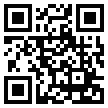1D Barcodes |
Features |
Organization / Application |
Code 39
USD-3
Code 3 of 9

|
 Numeric (0-9) Numeric (0-9)
 Capital Letters (A-Z) Capital Letters (A-Z)
 7 special char (space-+.$/%) 7 special char (space-+.$/%)
 128 ASCII characters 128 ASCII characters
 Variable length Variable length
 Optional check digit Optional check digit
|
CIP (Club Inter Pharmaceutique in France) or French Pharmacode
ODETTE - European Auto Industry
LOGMARS
PZN (Pharma Zentral Nummer) or German Pharmacode
HIBC - Health Industry Barcode
GSA - General Services Administration
AIAG - Automotive Industry Action Group
DoD MIL-STD-1189 LOGMARS
DoD MIL-STD-129P
|
Code 128

|
 128 ASCII Characters 128 ASCII Characters
 Control characters Control characters
 Numeric mode (00-99) Numeric mode (00-99)
 Variable length Variable length
 Check digits Check digits
 High Density High Density |
HIBC - Health Industry Barcode
USPS Delivery Confirmation
American Association of Blood Banks(ISBT 128)
SISAC- Serials Industry Systems Advisory Committee)
|
Code 93

|
 128 ASCII Characters 128 ASCII Characters
 Variable length Variable length
 Check digits Check digits
 High Density High Density |
|
Interleaved 2/5
ITF
ITF14
 |
 Numeric (0-9) Numeric (0-9)
 Variable Length Variable Length
 Optional check digit Optional check digit
 High Density High Density |
IATA (International Air Transport Association) Luggage Tag
ITF-14 or SCC-14 (Shipping Container Code)
HIBC - Health Industry Barcode
USPS special services
OPC (Optical Product Code Council)
German Post Identcode and Leitcode
CIP HR (Pharma France) |
CODABAR
NW-7 (in Japan)
USD-4,
Rationalized Codabar
 |
 Numeric (0-9) and Numeric (0-9) and
 6 special char ($-:/.+) 6 special char ($-:/.+)
 Variable length Variable length |
America Blood Centers (ABC Codabar)
Ameritech Library Services
|
UCC 128
GS1-128
EAN-128
 |
 128 ASCII Characters 128 ASCII Characters
 Control characters Control characters
 Numeric mode (00-99) Numeric mode (00-99)
 Variable length Variable length
 Check digits Check digits
 High Density High Density |
UCC (Uniform Code Council)
EAN (European Article Numbering System)
FDA (Food and Drug Administration) |
UPC-A
 |
 Numeric (0-9) Numeric (0-9)
 Fixed length Fixed length
 Check digit Check digit |
UPC (Uniform Product Code)
NHRIC (National Health Related Items Code)
NDC (US National Drug Code) |
UPC-E
 |
 Numeric (0-9) Numeric (0-9)
 Fixed length Fixed length
 Check digit Check digit |
UPC (Uniform Product Code) |
EAN-13
JAN-13
 |
 Numeric (0-9) Numeric (0-9)
 Fixed length Fixed length
 Check digit Check digit |
EAN (European Article Numbering System)
Bookland ISBN (International Standard Book Numbers)
ISSN (International Standard Serial Numbering)
Spanish Pharmacode
JAN (Japan Article Number) |
EAN-8
JAN-8
 |
 Numeric (0-9) Numeric (0-9)
 Fixed length Fixed length
 Check digit Check digit |
EAN (European Article Numbering System) |
1D Special Barcodes |
Features |
Organization / Application |
Patch Code
 |
 Limited Types: 1,2,3,4,6,T Limited Types: 1,2,3,4,6,T
 1 character long, does not encode 1 character long, does not encode
 data, but acts as a signal data, but acts as a signal
|
Used only for batch separation and scanner control, primarily with Kodak scanners |
Postal Barcodes |
Features |
Organization / Application |
| PostNet / Planet
 |
 Numeric (0-9) Numeric (0-9)
 Fixed length (5,9 or 11ch) Fixed length (5,9 or 11ch)
 Check digit Check digit |
US Postal Service, and most other postal authorities. |
USPS Intelligent Mail
 |
 Numeric (0-9)
 Fixed length (31ch)
 CRC check |
|
Australia Post

|
 Alpha-Numeric Alpha-Numeric
 Fixed length (10 +) Fixed length (10 +)
 Custom data embedding Custom data embedding
 Read Solomon ECC Read Solomon ECC
|
Australia Post |
British Post Office Postcode
 |
 Alpha-Numeric (0-9, A-Z)
 Fixed length (8,9 or 10ch)
 Check digit |
Royal Mail in the UK |
4-State Postal Barcodes

|
 Alpha-Numeric (0-9)
 Check digit |
Used by Postal Service of various countries./div> |
2D Barcodes |
Features |
Organization / Application |
DataMatrix
 |
 Multiple modes to represent text, numeric and binary data. Multiple modes to represent text, numeric and binary data.
 Variable length Variable length
 Very High capacity Very High capacity
 Fixed ECC Level Fixed ECC Level
 Very high density Very high density |
GS1-DataMatrix
German Post Stampit
Pharmaceutical industry for unit dose packaging
Automotive Industry (AIAG)
NASA
Electronic Industry Association |
PDF417
 |
 Multiple modes to represent text, Multiple modes to represent text,
 numeric and binary data. numeric and binary data.
 Variable length Variable length
 Flexible Geometry, Module size Flexible Geometry, Module size
 High capacity High capacity
 User Selectable ECC Level User Selectable ECC Level
 MacroPDF417 Mode MacroPDF417 Mode
|
DoD MIL-STD-129P
AAMVA (American Assoc of Motor Vehicle Administrators)
IATA (International Air Transport Assoc - for Bar Code Boarding Pass)
ANSI Drivers' license and ID cards
|
QR
 |
 Multiple modes to represent text, Kanji,
numeric, and binary data. Multiple modes to represent text, Kanji,
numeric, and binary data.
 Variable length Variable length
 Very High capacity Very High capacity
 Selectable ECC Level Selectable ECC Level
 Very high density Very high density |
GS1-QR
|